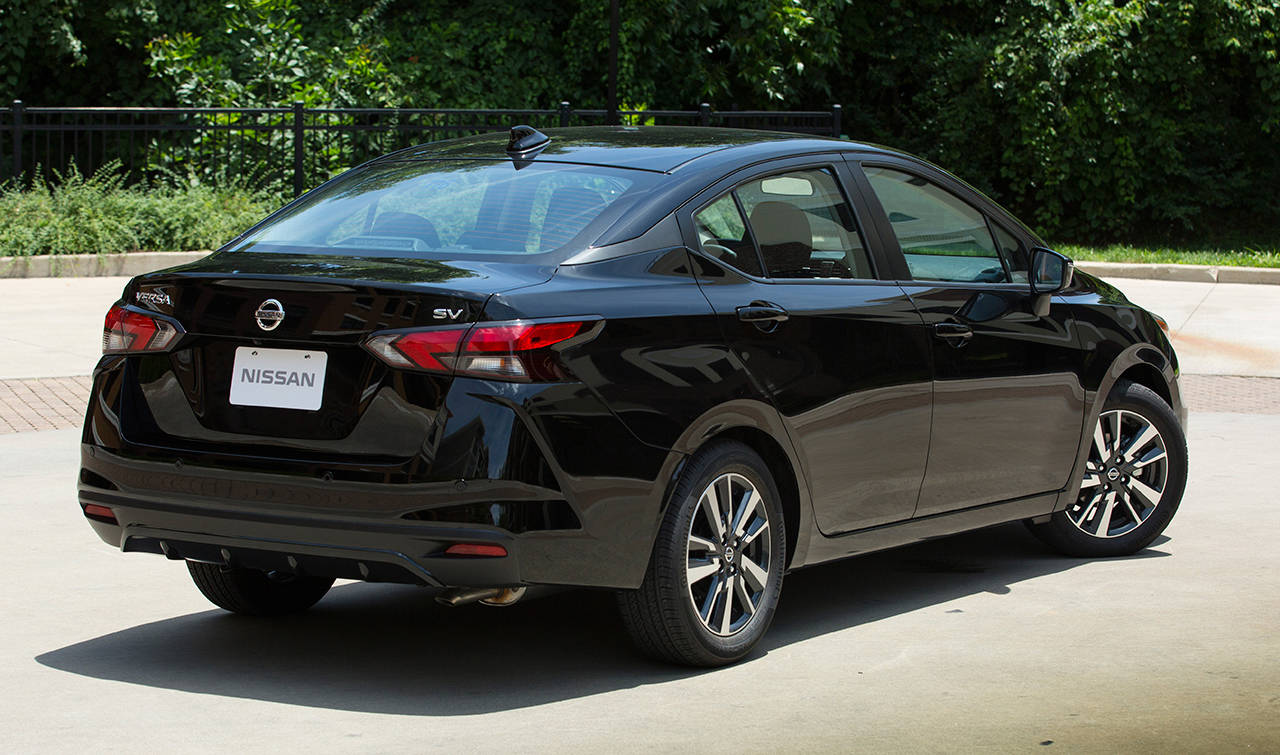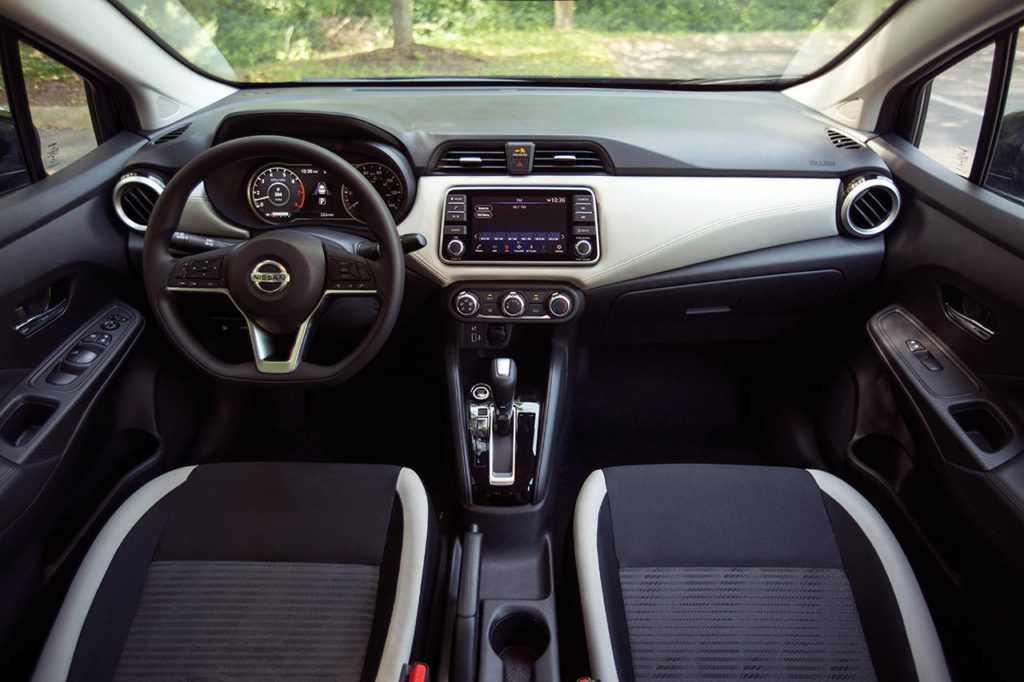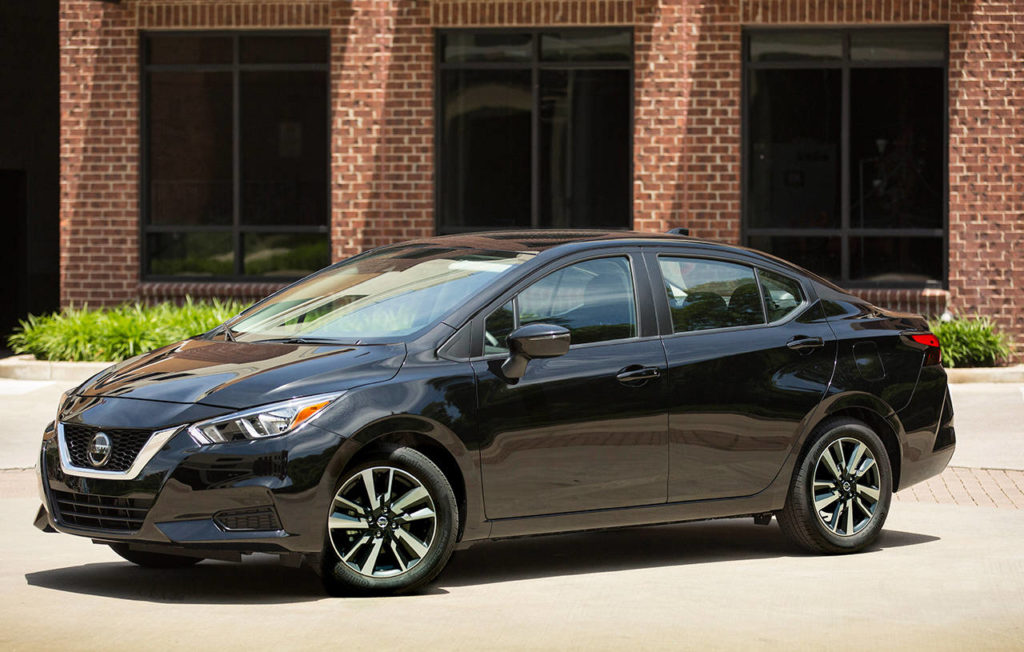This year, the best-selling Nissan Versa relinquishes its status as America’s most affordable car, but it’s still among the top three least expensive cars in the country, and ranks high among the best affordable subcompacts.
The Versa sedan is completely redesigned for 2020, sporting a snazzy new exterior, a much more refined interior, additional safety features, and upgraded infotainment technology.
There are three trim levels: S, SV, and SR. The S model is available with a five-speed manual transmission or a continuously variable automatic (CVT). SV and SR come with a CVT.
Including an $895 destination charge, pricing starts at $15,625 for an S with manual transmission ($17,295 with CVT), $18,535 for the SV, and $19,135 for the SR.
The same four-cylinder engine with 122 horsepower is featured across the board. It takes regular unleaded gasoline and delivers a gratifying 32 mpg city, 40 mpg highway, and 35 mpg combined when paired with a CVT. Numbers are less favorable for the manual gearbox: 27 mpg city, 35 mpg highway, and 30 mpg combined.
Versa has seating for five, and a 14.3 cubic-feet trunk whose opening is broadened for 2020 for easier loading and unloading.
The 2020 Versa’s base S model is not bare-bones. Standard features are numerous, including power windows with driver-side one-touch auto-up/down, power door locks, halogen headlights with auto on/off, push-button engine start, Bluetooth, 7-inch touchscreen, and automatic emergency braking with pedestrian detection.
For this review I drove the Versa SV model, which bumps-up standard safety equipment to include rear automatic braking, lane departure warning, and blind spot monitoring with rear cross traffic alert.
The Nissan Connect infotainment system is also standard, with a 7-inch touchscreen, four speakers, Android Auto and Apple CarPlay, and Sirius XM satellite radio. The touchscreen is a little, shall we say, touchy. I often had to give it a second press in order to get a response to a command. However, in its defense it might have been poisoned by my negative vibes toward touchscreens, and to its credit there’s a physical volume control knob.
Spacing has been rearranged for the new Versa interior, giving front passengers more legroom but borrowing it from rear passengers.
The cabin is tranquil, keeping out unwanted noise and holding its own against bumps in the road.
Options on my tester include a center armrest with storage, an Electronics Package and a Lighting Package. There’s also the inevitable extra charge for carpeted floor mats and a trunk mat ($210). The center armrest is worth the extra $300 for the privacy stowage alone, and without it there’s only one armrest, for the driver. The two packages mostly involve extra lighting. They’re nice to have, and give Versa a sophistication boost, but together they add $1,545 to the bottom line. If low cost is your number one purchase priority, forgo the fancy lights and the tester would be only $19,045.
Affordability and fuel economy are Versa’s bailiwick. Nissan has greatly improved Versa for 2020 but without losing sight of its roots. Versa’s power and performance are far from earth-shattering, and that’s literally the point.
2020 NISSAN VERSA SV
Base price, including destination charge: $18,535
Price as driven: $20,590
Mary Lowry is an independent automotive writer who lives in Snohomish County. She is a member of the Motor Press Guild, and a member and past president of the Northwest Automotive Press Association. Vehicles are provided by the manufacturers as a one-week loan for review purposes only. In no way do the manufacturers control the content of the reviews.
Talk to us
> Give us your news tips.
> Send us a letter to the editor.
> More Herald contact information.



























